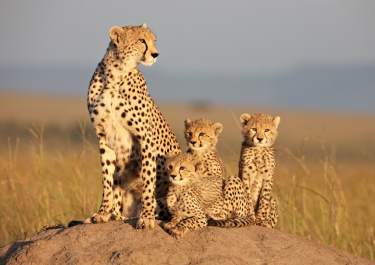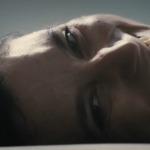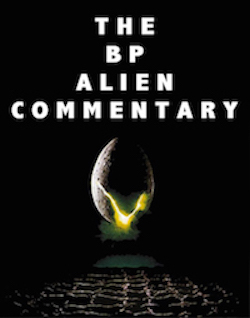Single Mothers and Blood Feuds, by David Bax
Those who attentively follow things like sports or politics are able to see it in a way casual observers are not. They can recognize storylines that develop and unfold over the course of seasons or terms of office. What looks like chaos and randomness to others become parts of a larger narrative. The best nature documentaries help us see the non-human world in the same way.
African Cats is the third entry in Disney’s series of documentaries released annually to celebrate Earth Day. This one was filmed beautifully in Kenya and takes place over a year or so, following two combating lion prides on opposite sides of a river, as well as a cheetah mother trying to raise cubs on her own. The directors, Alistair Fothergill and Keith Scholey, do an excellent job of turning these animals into varied and unique characters and this cheetah, known as Sita, is easily the best. The film makes clear that it’s more than difficult enough staying alive on your own in this wild environment, let alone protecting young one by yourself. She is beset on all sides – and at all times – by adversaries.
Of course, calling them adversaries is completely subjective. We could just as easily be watching at documentary about hyenas, in which the cheetah is the enemy to be bested. This is our entry point. African Cats is a documentary that chooses to structure itself as a narrative. Narratives contain conflict and conflict requires that we have protagonists and antagonists. Were I some sort of idealistic documentary purist, I might have an objection to this. Why should one pride of lions be the “bad guys” and the other the “good guys,” when all involved are acting merely on instinct, surviving the way they’ve learned to other centuries. I’m not that person, though. These Disney documentaries are apparently designed to be educational and persuasive, to encourage young and old alike to be more aware of and invested in the planet on which they dwell. If a imposed story gets that job done then so be it. Especially if it’s a story as good as this one.
What transpires in African Cats is positively Shakespearean. There is a leader attempting to rule his territory with the help of his combative sons. There is more than one case of exile. There are even characters with only one scene that are as fully drawn, interesting and unique as MacDuff’s son in Macbeth. Everything that happens in this film is a seemingly singular moment. There are harrowing attacks, breathtaking hunts, heartbreaking losses, tense near-misses and plenty of touching moments of growth and playfulness. Each is treated as an epochal moment, a tone that the film manages to pull off by keeping itself to a brisk 90 minutes and never letting the audience get bored. The music and the (occasionally sweetened) sound of roaring and hissing often manage to overshadow Samuel L. Jackson’s capable narration. You’d be forgiven for thinking, while watching this movie, that you were witnessing once in a lifetime events. The startling and awe-inspiring truth is that this year is like every year on the African plains.
If I have one complaint (and boy, do I), it’s with the end credits. Someone at Disney, almost certainly not the directors who made this powerful film, decided to pair the credit roll with footage of the animals from the film and a bunch of astoundingly unfunny jokes. One example: a picture of some giraffes accompanied by their credit – “Crane Operators.” The only thing keeping African Cats from greatness is the fact that this section hasn’t been completely excised and then torched. I’m not joking. It’s terrible.
The recent surge of engrossing , breathtaking, high-budget nature documentaries, from March of the Penguins to this one, and accompanied on television with the “Planet Earth” and “Life” series, is a welcome trend. These films don’t need to be proselytizing about messages of conservation, such as the fact that there are only about 12,000 cheetahs like Sita left. Their beauty and natural drama alone is persuasive enough advocacy for the world around us.

























